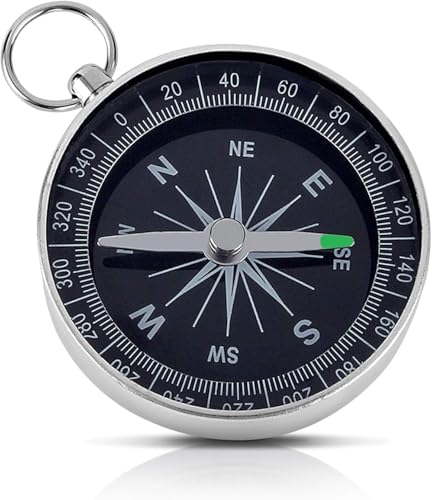Understanding Clinometer on Compass – A Comprehensive Guide
If you are a hiker, camper, or just an outdoor enthusiast, you must have heard about the clinometer on a compass. It is an essential tool for outdoor navigation and orienteering. A clinometer is an instrument that measures the angle of elevation or depression of an object from a horizontal plane. When integrated into a compass, it makes it easier to calculate the height of an object or the angle of elevation of a slope. In this article, we will dive into everything you need to know about the clinometer on a compass.
What is a Clinometer on a Compass?
A clinometer on a compass is a device that measures the angle of elevation or inclination of a slope. It is an essential tool for hikers, mountaineers, geologists, surveyors, and anyone who needs to measure the slope of the terrain. The clinometer on a compass is typically built into the compass housing or attached to the side of the compass. It consists of a graduated scale with a sighting mechanism that allows the user to align the compass with a target and read the angle of elevation or inclination.
How to Use a Clinometer on a Compass?
Using a clinometer on a compass is relatively easy. First, the user needs to determine the slope’s direction by aligning the compass with the slope. Next, they need to read the angle of elevation or inclination from the graduated scale on the sighting mechanism. Once the angle is determined, the user can use basic trigonometry to calculate the height of the slope or the length of the hypotenuse. It is important to note that the accuracy of the measurement depends on the user’s ability to align the compass accurately with the slope.
Benefits of Using a Clinometer on a Compass
Using a clinometer on a compass has several benefits. First, it allows the user to measure the slope of the terrain accurately, which is essential for navigation and orienteering. Second, it enables the user to calculate the height of an object, which is useful for geologists, surveyors, and architects. Third, it improves the accuracy of topographical surveys, which is critical for engineering and construction projects. Overall, a clinometer on a compass is an essential tool for anyone who needs accurate measurements of the terrain’s slope and height.
In conclusion, a clinometer on a compass is an essential tool for outdoor navigation, orienteering, and topographical surveys. It allows the user to measure the slope of the terrain accurately, calculate the height of an object, and improve the accuracy of topographical surveys. If you plan to go hiking, camping, or exploring, make sure to bring a compass with a clinometer to enhance your navigation and measurement skills.






